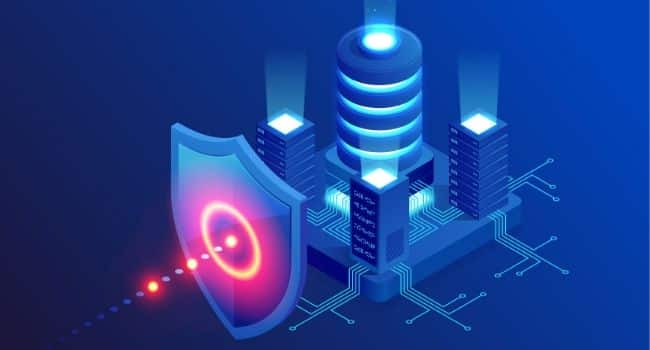Cybersecurity starts as a wall built around your business. If built with weak materials, bad actors will find their way through. This is a constant reality for all businesses. Let’s take a few minutes to explore types of cyberattacks and what you can do to proactively stop them.
What is a Cyberattack?
A cyberattack is any attempt to expose, alter, disable, destroy, steal, or gain unauthorized access to or make unauthorized use of an asset. Cyberattacks can take many forms, but common attacks can include malware, phishing, ransomware attacks, and data breaches.
Who’s at Risk?
The short answer is everyone. From startups to multinational corporations, no industry is immune. However, some industries like finance, healthcare, and retail are particularly desirable targets for cybercriminals due to the sensitive nature of the data they handle, such as credit card numbers, social security details, and personally identifiable information (PII).
How to Recognize an Attack
Cybercriminals are constantly on the lookout for the easiest entry points into a business’s digital domain. While attacks can take many forms, some of the most prevalent vulnerabilities include weak passwords, outdated software, and human error through social engineering. Below are some common signs to look for to help signal a cyberattack:
- Unusual Account Activity: Unexpected changes in files or settings, unexplained access from unfamiliar locations, or unauthorized password resets can indicate a breach in your security. This sign should be particularly alarming because it often means an attacker has gained access to your system and may be manipulating data or taking action within your accounts.
- Phishing Attempts: Receiving an increase in phishing emails—messages attempting to trick individuals into revealing sensitive information or clicking on malicious links—is often a precursor to more targeted attacks.
- Ransomware Alerts: The appearance of ransomware notifications, which lock access to your data and demand payment for its release, is a clear and immediate sign of a cyberattack. Such attacks can halt business operations but also compromise the confidentiality of your data.
- Slow System Performance: A sudden slowdown in your network or computer systems may indicate malicious activities, such as a background data breach or a Distributed Denial of Service (DDoS) attack. While performance issues can have many causes, a significant and unexplained drop in speed warrants an investigation for potential security threats.
- Suspicious Network Traffic: Anomalies in network traffic, such as unexplained spikes or data flows to unusual locations, can suggest that attackers are probing your system or that data is being exfiltrated. Monitoring network traffic is essential for spotting these irregularities early on
Protect Your Business
Cyber threats constantly evolve, posing significant risks to businesses of all sizes. Understanding these threats and taking action to protect your business before they happen is crucial. Here are some brief (but easy) strategies that can help get you started:
- Train Your Team: Educating your team to recognize, report, and prevent phishing attempts is your first and best line of defense. Regular training on best practices for identifying and responding to threats is essential.
- Fortifying Wi-Fi Security: Secure, encrypted Wi-Fi networks are non-negotiable. Use strong encryption methods and change default passwords to keep your network safe.
- Cybersecurity Insurance: This can be a safety net, providing financial protection against data breaches and cyberattacks. Ensure your policy covers the risks most relevant to your business.
- Physical Security Measures: Physical and cyber security are intertwined. Control who has access to your building and physical IT infrastructure to prevent unauthorized access.
- Password Security and Multi-Factor Authentication: Strong, unique passwords and the additional layer of security provided by multi-factor authentication significantly reduce the risk of unauthorized access.
- Secure Data Backups: Regular, secure backups of your business data ensure you can recover critical information even after a cyberattack, maintaining business continuity.
- Cybersecurity for Remote Work: Secure remote work environments with VPNs, encourage using secure home networks, and educate employees about the risks of public Wi-Fi.
- Software and Systems Updates: Keep your software and systems up to date with the latest patches and updates to protect against known vulnerabilities.
- Work With a Partner: Outsource your cybersecurity to knowledgeable experts like FTTS. Our team has the training, experience, and certifications to help businesses set up, maintain, and scale a company’s cybersecurity infrastructure.
Conclusion
Cybersecurity is an ongoing journey, requiring constant adjustments and adaptation to new threats. By recognizing the red flags of cyberattacks and implementing strong security measures, businesses can protect their digital and physical assets. Partnering with a managed IT services provider like Forward Thinking Technology Solutions (FTTS) can offer businesses the expertise and support needed to navigate the complex landscape of cybersecurity, ensuring that your business remains secure, compliant, and ready to face the challenges of the digital world head-on.
Find out how we can help your business be more secure and learn how we can help you grow. Contact us today.

Eric DiFulvio
Eric DiFulvio, CEO and Founder of FTTS, seamlessly bridges his educational roots with profound technological insight. Transitioning from teaching to global tech leadership, Eric’s passion lies in forging partnerships that prioritize customer success. His vision shapes FTTS’s core values, emphasizing our unwavering commitment to client service excellence.

